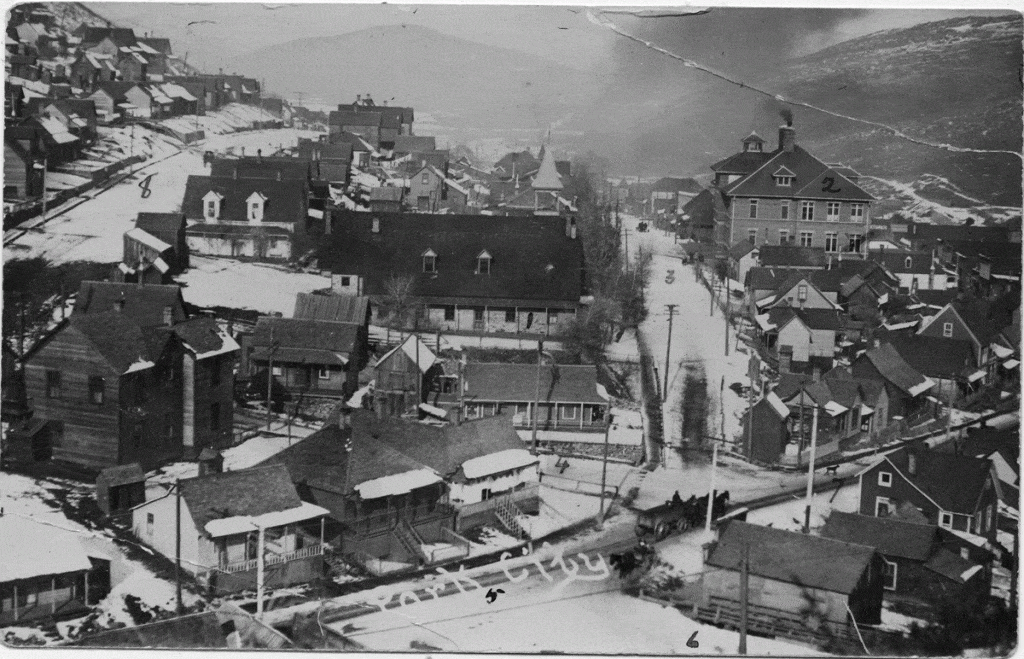Many of you are familiar with the story of the Miners Hospital. You know that as Park City matured from a mining camp to a thriving town, the need for a local hospital grew. You’ve heard about how the local Western Federation of Miners Union #144 was instrumental in gathering the funds to support its construction and continued operation. You have probably driven past the old building, completed in 1904, now located on Park Avenue. But what you might not know is that, for a short time, the house at 421 Park Avenue actually served as Park City’s first hospital.

Park City Historical Society and Museum, Thomas F. Hansen Collection
In late 1899, two Salt Lake residents – businessman Edwin H. Howard and physician Thomas Monahan – traveled to Park City with the intention of securing a site for a small hospital. Howard was an accomplished manager. Monahan was a doctor with a degree of fame across Utah for his successful involvement in a complex brain injury and surgical case in Salt Lake City.
The spacious, two-story house at 421 Park Avenue caught their eye. It had been built for Reese Williams, his wife, and their children in 1898. Tragically for the Williams family, Reese died just three days after it was completed. His wife and children continued to live in the home for just one year.
Howard and Monahan were attracted by the size and central location of the house and leased the building from Mrs. Williams. By February 1900, the hospital was nearly ready to open. It was “thoroughly equipped with the newest appliances,” according to the Park Record. Furniture arrived over the Union Pacific on February 9. And on February 17, though electric lights were still being installed on the second floor, the “operating room and one additional room [were] ready to receive patients.”
The small hospital was run by Howard, Dr. Monahan, and a nurse Eva van Tromp. The 1900 census shows eight patients. Two of them, Henry Walker and Axel Pearson, were dealing with severe leg injuries.
Even as the hospital was open and treating emergency cases, Howard and others continued to advocate for changes to the handling of medical care in Park City. At the turn of the century, Park City miners had one dollar from each paycheck deducted and sent to a Salt Lake City hospital fund. Prior to Park City having a local hospital, all serious cases were sent to hospitals in the valley for treatment and this money helped offset their care.
But as Howard pointed out, delayed treatment caused by the complicated process of transporting the sick and injured down the canyon was a financial burden on the families and could cost patients their lives. In a firm argument published in the local paper, Howard stated that because a local hospital now existed, the money should be diverted from Salt Lake and given instead to Park City. He urged local mine companies to change the regulations, to stop requiring Park City miners to send their money to Salt Lake and to invest locally instead.
Check back next week to learn even more.
Sources:
Park Record:
February 10, 1900; March 17, 1900; April 7, 1900; April 21, 1900; May 19, 1900;
October 13, 1900; February 2, 1901; December 12, 1093; February 20, 1904
Salt Lake Herald: May 19, 1899; May
20, 1899; July 8, 1899; May 2, 1901;
Salt Lake Telegram: March 24, 1903
Roger Roper, “421 Park Avenue, Site Information Form,” Utah State Historical
Society Historic Preservation Research Office, 1984.
US Census, 1900 and 1910
Samuel Randolph Skidmore, death certificate, October 19, 1956